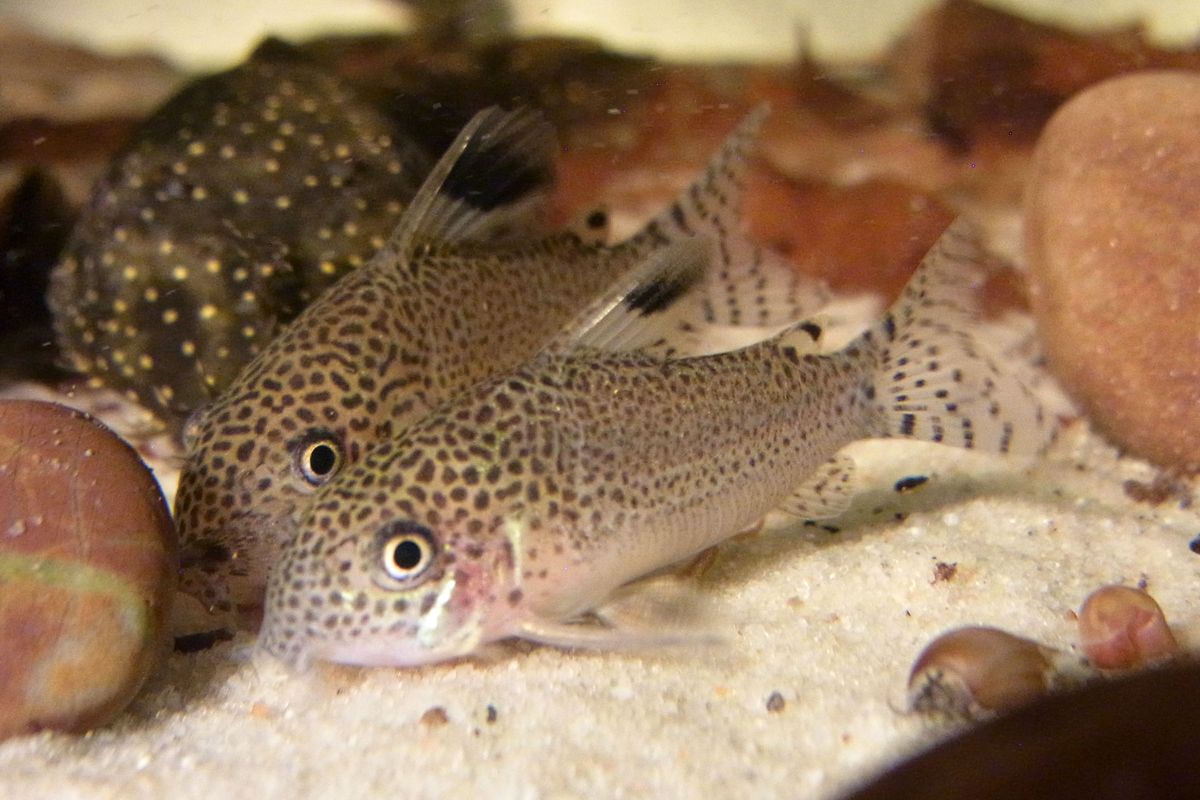Help my cory is struggling to stay upright.
Corys or corydoras is a huge group of fish, a group that grows every year as new species are discovered, and the families are rearranged. But they all share certain similarities. They are from South America, where the water tends to be soft and acid, although some rivers can be around pH7. This means it’s important to know the natural range of the species that you keep.
Symptoms
This fish was presenting as wobbly, falling to its side, righting itself, but falling again. One of the corys died a week previously. The fish were active when purchased, but had been hiding and subdued for the previous 3 to 4 weeks.
Test results
Ammonia was the only liquid test available and showed as 0.
From a test strip pH was 6.8 KH 6 GH 4 or 5, Nitrates were showing as 0.
Background information
Weekly water changes use a bottled bacteria, dechlorinator, and recently the addition of a KH booster.
The tank is only 4 months old, a 3 week set-up period with no ammonia added, but some flake food. Testing was done by the shop who did not share any test results with the owner.
The behaviour and the time point towards the cycle not having been started before the fish were added and the corys being used inadvertently for a fish-in cycle. They would have gone through the ammonia peak, and nirtrite stages, saved by the low pH as the tank is likely to have been depleted of KH as the tap water is on the softer end. The addition of the KH boost may have briefly raised the pH causing the ammonia to convert to ammonium and cause damage. At this stage, the ammonia may have been converted to nitrite, but not to nitrate, as shown by 0 nitrates. The use of bottled bacteria frequently speeds up the ammonia to nitrate step, but the nitrite to nitrate microorganisms take just as long to form.
This behaviour is often indicative of poor water quality. The first thing to do is to test your tap and tank water pH and KH, if they match or the pH is within 0.2 of each other take a water sample for further testing and start a large water change, I would advise an 80% change, then retest. Even if nothing shows on the test it may be that some toxin has found its way into your water and the water change will dilute the issue.
If you are concerned about nitrite poisoning, aka brown blood disease. Then treat the fish using a methylene blue bath. Click here for more details on that.
If the fish are still showing signs after 12 hours and the water is testing ammonia 0, nitrite 0, and nitrates less than 15 ppm, then you might need to start looking at other causes. Check out our diseases and disorders files for more ideas.
The main issue here is that a caring owner asked at the shop who should have given the correct advice, and now the worst is happening.

